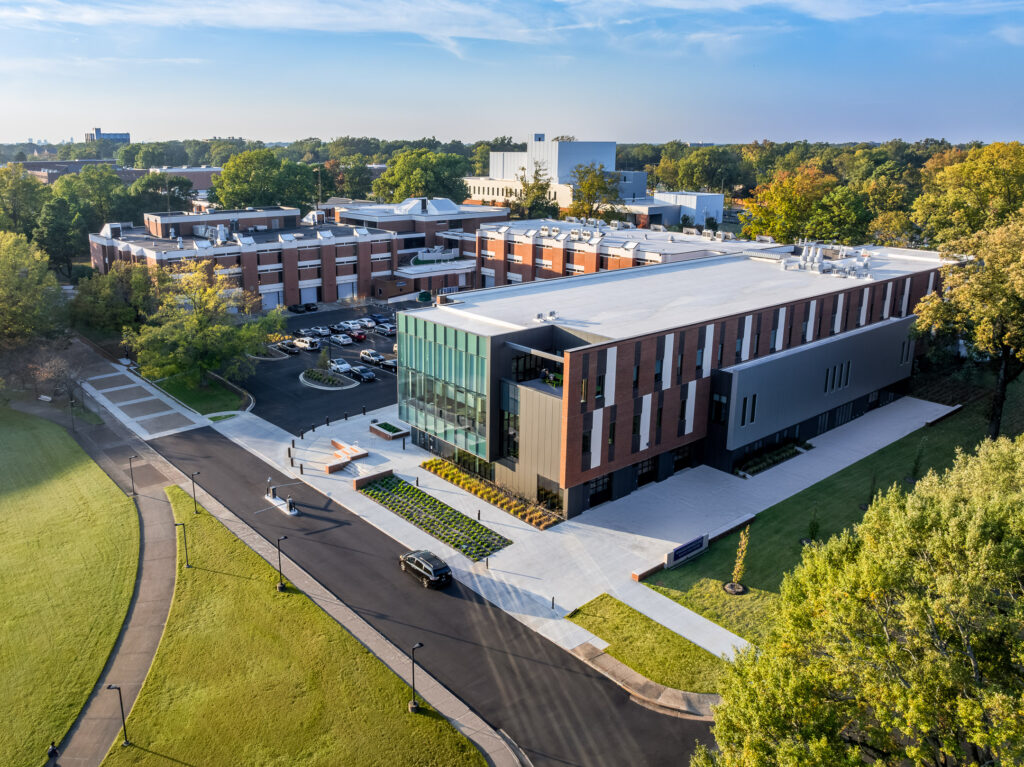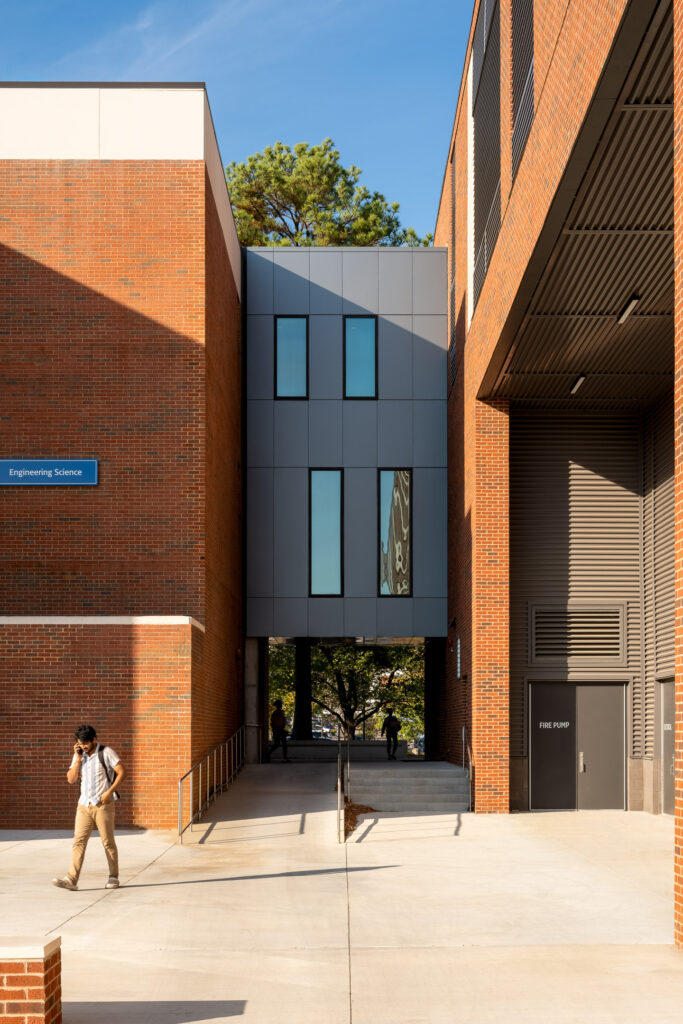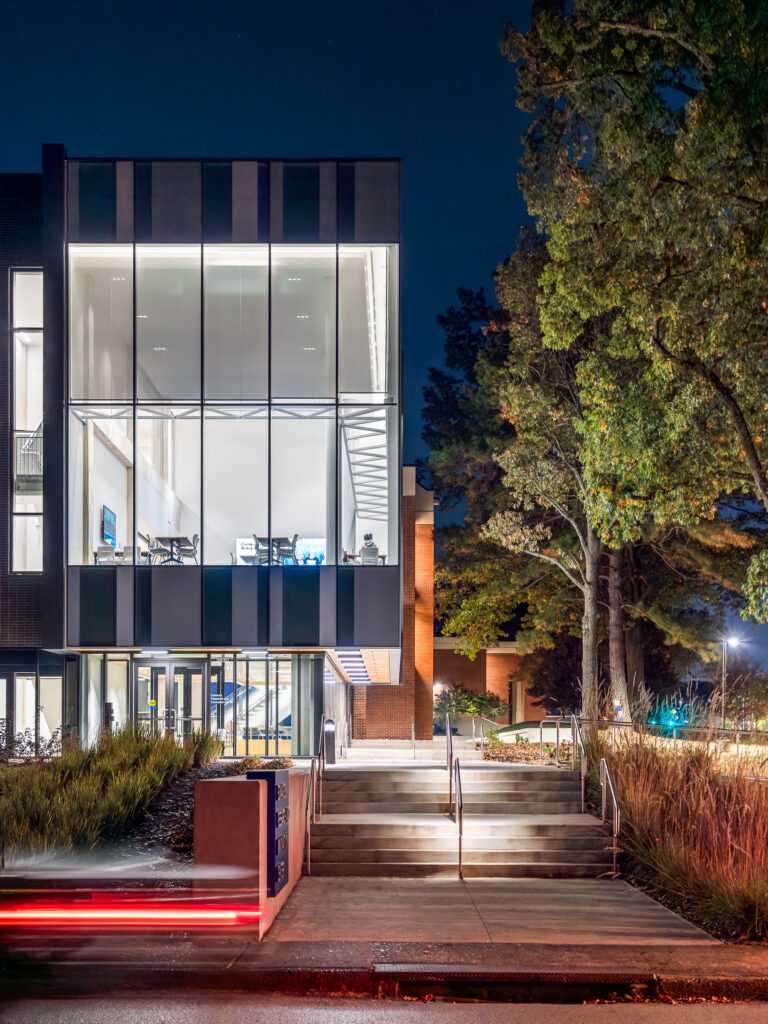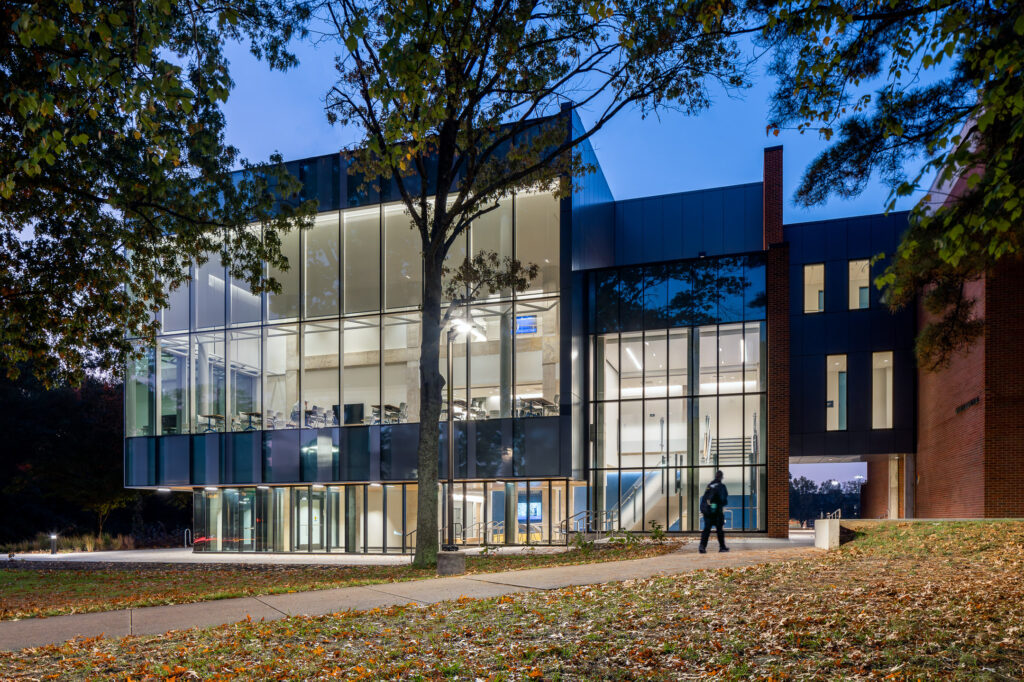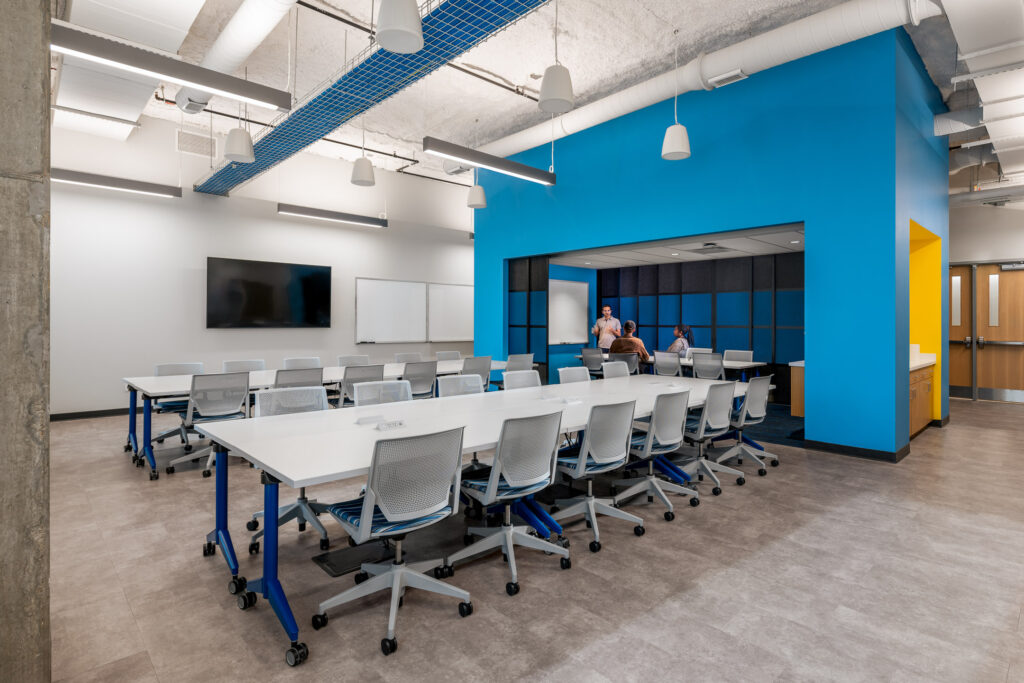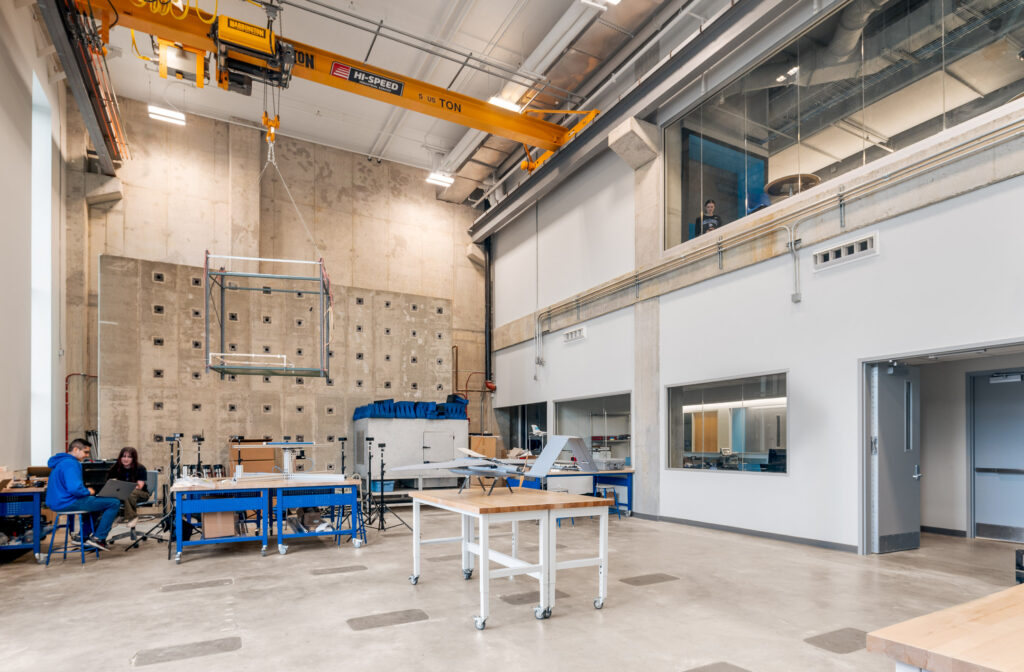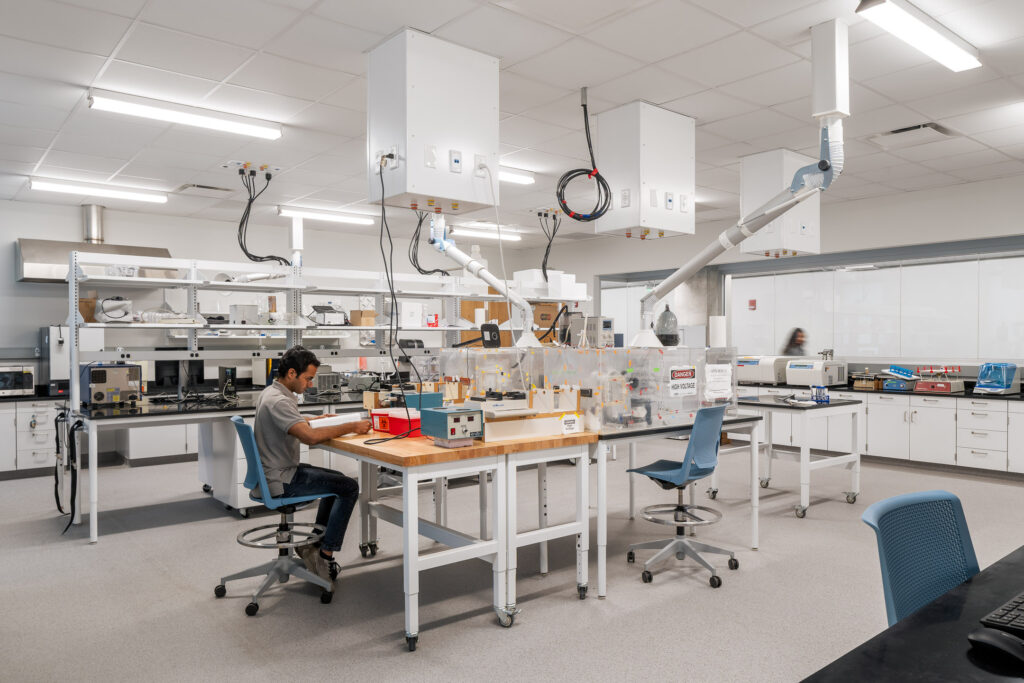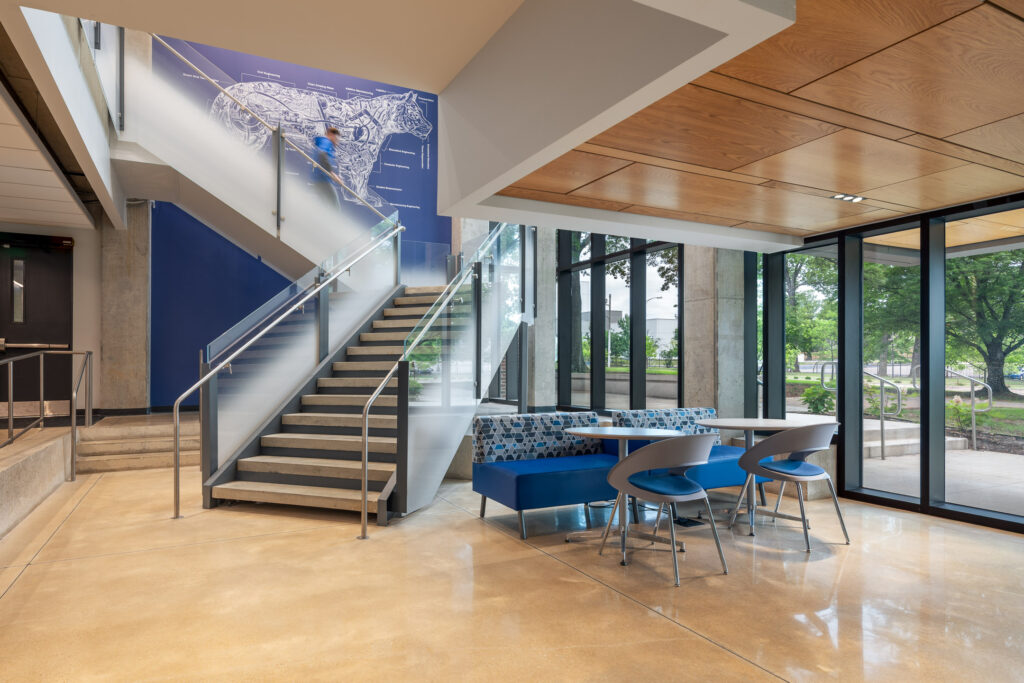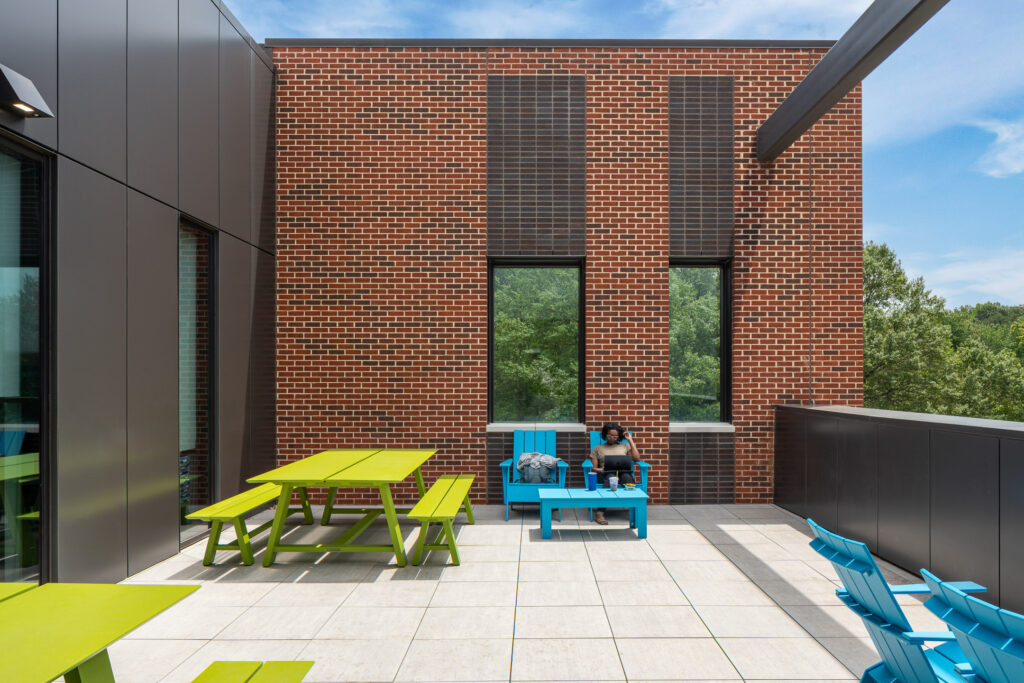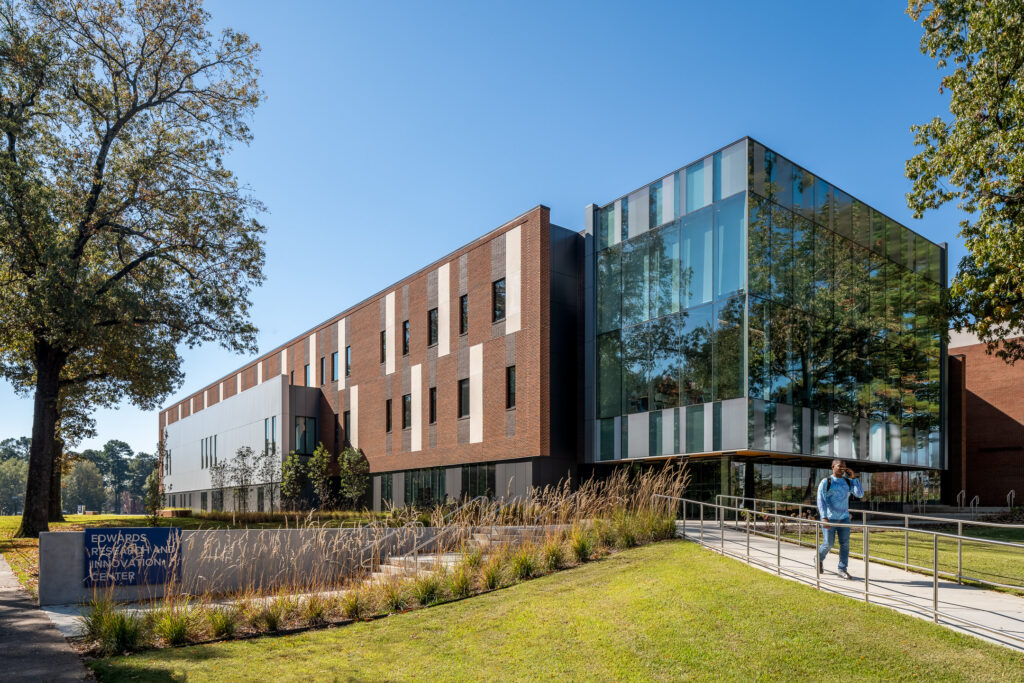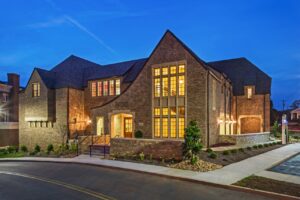The combined team of A2H + SmithGroup was selected by the University of Memphis to provide full service architectural and engineering design for this ground up new 65,000 SF Edwards Research and Innovation Center (ERIC) for the Herff College of Engineering. The ERIC building exemplifies the seamless integration of research-driven functionality with innovative design. As a state-of-the-art STEM facility, it bridges academia, industry, and community by providing spaces for seismic research, robotics, biomaterials, cybersecurity, and advanced manufacturing. Its strategic connectivity to the engineering complex fosters interdisciplinary collaboration, while the building’s design serves as an inviting visual gateway to the campus. This unique combination of forward-thinking design, functionality, and strategic campus placement positions the Edwards Center as a landmark in engineering education.
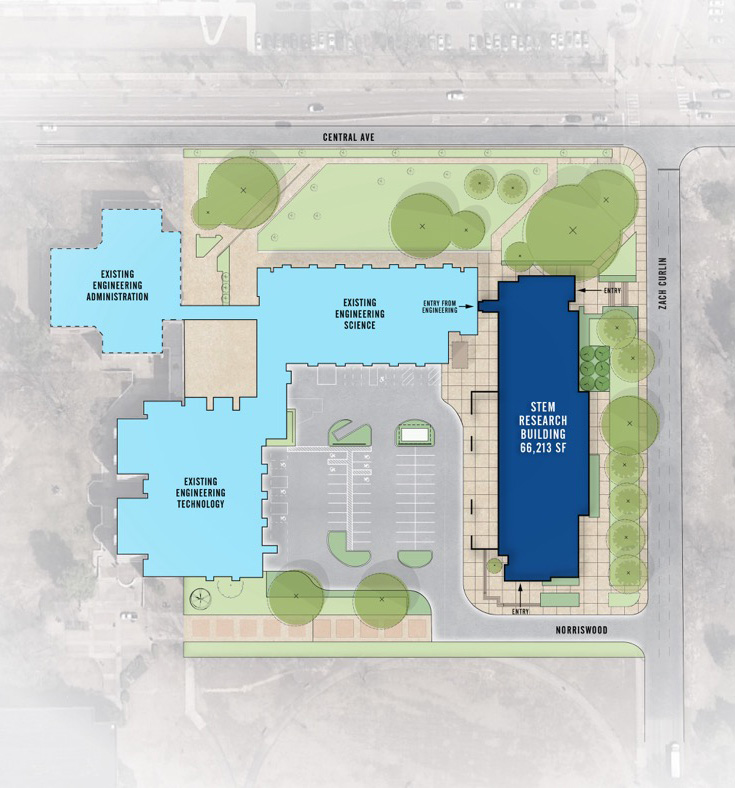
The Edwards Research and Innovation Center was carefully planned to promote connectivity on three scales—academic, campus, and community. At the academic level, the building physically links to the existing engineering complex, enabling interactions across disciplines. At the campus level, the design introduces active gathering spaces along the greenway, creating a welcoming entry for students and faculty. At the community level, the transparent two-story exhibit space acts as a “window” into the university’s research capabilities.
Key Elements:
- Lab Flexibility: High-bay laboratories and fabrication shops on the ground floor are designed with oversized openings to accommodate large machinery and evolving research needs.
- Student Collaboration: The second floor centers on active learning, featuring classrooms, breakout spaces, and visible connections to labs to inspire innovation.
- Research Functionality: Engineering and Arts & Sciences labs are housed on the third floor, with deliberate visual connectivity between levels to showcase the interplay of instruction and discovery.
- Aesthetic Choices: The engineering aesthetic of exposed structural and mechanical systems not only reflects the building’s purpose but also maximizes budget efficiency without sacrificing functionality.

